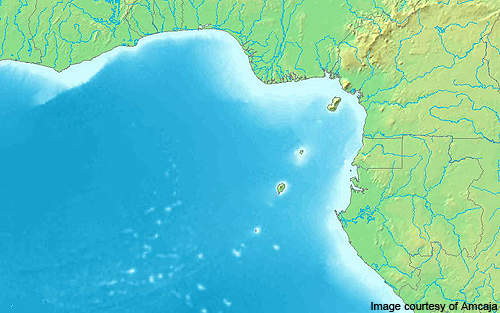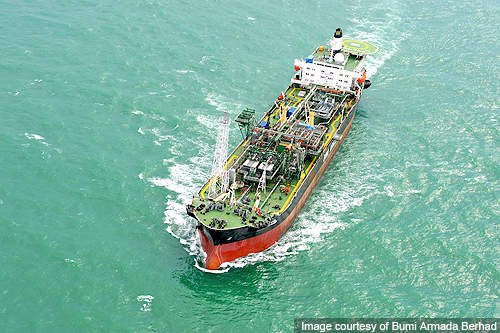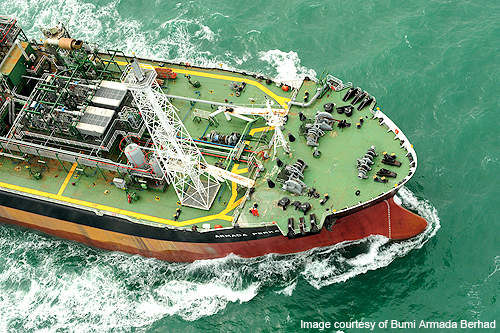The Okoro field lies at a water depth of 46ft in block OML 112, which is situated about 12km off the shore of Nigeria. The field was discovered in 1973 by Japan Petroleum. The field’s reserves are estimated at 25mmbbls of oil.
Afren Energy Resources, a subsidiary of Afren plc, is the operator of the field and holds 50% working interest. Amni International Petroleum Development Company holds the remaining 50% interest.
Discovery
Okoro was discovered by the Okoro-1 well, which encountered two oil bearing sands in the Agbada Formation at depths ranging between 4,900ft and 5,500ft. The well was tested and recorded a flow rate of 1,500bpd proving the commercial viability of the field. Another appraisal well Okoro-2 was drilled in November 1974 further confirming the presence of both reservoir sands.
Field development and drilling
Afren became the operator of the field in 2006 and drilled an appraisal well named Okoro-3 in October 2006 using the Seadrill 7 jack-up rig. The vertical well was drilled to a depth of 6,500ft and confirmed the presence of hydrocarbons in the eastern extension of the field. In December 2006, the Okoro-3 sidetrack well was drilled to a depth of 6,870ft. The well encountered 70ft of net oil pay.
In January 2007, Afren submitted a field development plan (FDP) for the field to the Government of Nigeria. The FDP was approved in April 2007.
Development drilling for the field was started in January 2008. Transocean’s GlobalSantaFe Adriatic VI jack-up rig was used to initially drill two production wells. Another five wells were drilled subsequently and brought on-stream.
Production
In May 2008, the Okoro wellhead platform was installed at the field and connected to the FPSO through flowlines. First production from the field commenced in June 2008.
In June 2010, the field produced 11.4mmbbls of oil. Two more wells are planned to be drilled in 2010 to increase the field’s production volumes. Currently the field is producing at a rate of 16,000bpd.
Export
Oil produced by the Okoro wellhead platform is exported to the Armada Perkasa FPSO. The oil is transported onshore by export tankers.
Pipeline
Oil and gas produced from the field is transported to the Armada Perkasa FPSO through 3km of 4in gas lift, 6in test line and 8in production flowlines, and three double lazy wave risers. The risers feature bend stiffeners at the FPSO hang-off and anchors to keep them in position. The flowlines are covered with mats to provide additional stability from waves and currents.
Contracts
UK-based UWG was awarded a $5.5m contract to provide the Okoro wellhead platform. The scope of work for UWG included design, construction and installation of the platform and topside processing facilities.
Deepflex was awarded the contract for supplying flowlines and risers for the field.
Armada Perkasa FPSO
Built in 1975, the Armada Perkasa was the first FPSO operating in Malaysia.
The 59,650dwt vessel is owned and operated by Bumi Armada Berhad. The vessel was converted from a tanker to an FPSO at the Keppel Shipyard by Bumi Armada Berhad.
A full conversion programme was implemented, which included process handling facilities, gas compression, a 30m flare tower, and future proposed expansion for water injection. Modifications to the existing piping system and accommodation facilities were also carried out.
The FPSO is 201.2m long with a breadth of 32.2m. It can process 27,000bpd and store 360,000 barrels of crude oil.
The FPSO is located 1km south of the field at 13m of water. It features an eight point mooring system and is connected to the Okoro wellhead platform through flowlines and risers.
Okoro wellhead platform
The Okoro platform is a conductor-supported minimum offshore structure (CoSMOS). The topsides of the platform are supported by well conductors, eliminating the need for a steel jacket. The platform has nine slots and features gas lift and water injection facilities. Fabrication of the platform was carried out at Compact Manifold & Energy Services yard in Lagos, Nigeria.










